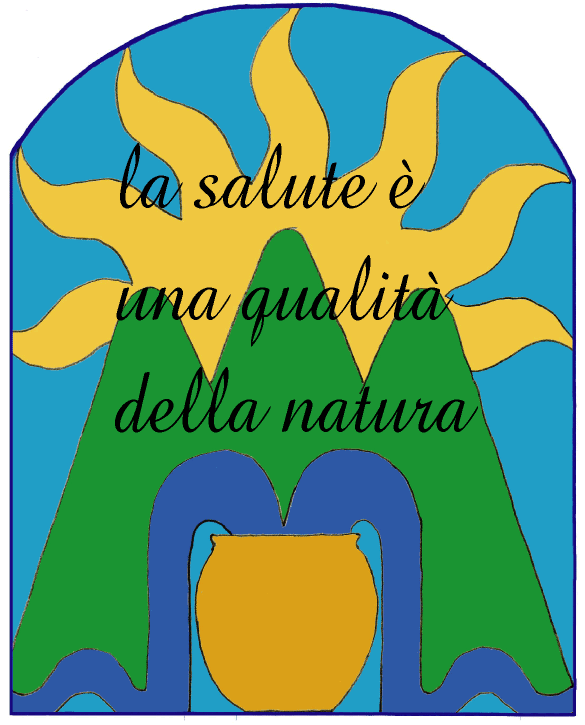Most probably the therapeutic virtues of these thermal waters have been clear since prehistoric times.
As a matter of facts, archaeological excavations carried out in the early years of 1900 uncovered votive offerings in the caves of Calda, in the immediate vicinity of the springs. Scholars considered these offerings as holy deposits linked to the “cult of healthy waters”. However, more convincing evidences came to light in 1732 (Dott. Michele La Cava – “I bagni di Latronico” – The Baths in Latronico – published in 1891): “Still on this land, in a place called Calda, you can find those various mineral waters peasants believe to be good to heal different illnesses” Almost 100 years later, in 1824, the “Calendario per l’anno Bisestile 1824” (the Calendar for the Leap Year 1824) wrote: “Several fountains of mineral water splash from a place named Calda; they contain principles of carbonic gas, hydrogen sulphide gas, magnesium carbonate gas, carbonate calcic gas and silica earth”. The first thorough analyses were done in 1842 by the chemist Grocco.
Besides, in 1899 Prof. Bartolomeo Gosio, from the Health Department, carried out the first chemical-physical and chemical exams.
This is what he said: “On large travertine strata the waters I have been called to investigate keep on flowing; however, a lot of them met downstream in a fast-flowing watercourse running into the Sinni”. The largest spring, measured in conditions of dryness (during the minimum flow in summer), produces around 42 litres of water per minutesecond which is equal to 151 m3/h. In ancient times it was thought that the waters of the Calda were sulphurous.
As a matter of facts, they had this appalling stink of rotten eggs still filling some places of the area nowadays. Yet, it is not possible to state that this is a common feature of all the waters; for example, the Grande Sorgiva (Big Spring), tasted also with the reagents more sensitive to its origin, turned out to be totally free from minimum traces of hydrogen sulphate; whereas, when I tasted samples collected downstream, I managed to find evidence of these components carried by another spring flowing from the right side, after swiftly flowing across some ground turned over by recent floods.
This small spring particularly aroused my interest because it is said that the prodigious and traditional effects of the hydrotherapic of the Calda are mainly due to its use as a drink (…)
These results show that the waters of the two springs of the “Calda di Latronico”, the only ones to be examined, are rich in universal principles as to quality and number; still, as far as quantity is concerned, they are poor in these, especially the water of the Grande Sorgiva (Big Spring). Undoubtedly, the reason underlying this scarcity is the fact that water is usually taken in a season immediately following torrential rains, which does not greatly affect the real mineral springs, yet it is not to be disregarded in our case because of the special features of the place, meeting point of other shallow waters.
Since then, numerous have been the chemical-physical exams on the three springs of the Calda:
- in 1970 Prof. Bellavista, the Director of the Pharmaceutical Chemistry Institute of the University of Perugia, carried out some examinations;
- in 1974 the same examinations were performed by Prof. Visintin, on behalf of the EAGAT (the Board for the Management of Thermal Waters);
- in July 1977 a study on the springs of “La Calda”, necessary for planning works, was conducted by Prof. Cotecchia.
The hydrogeologic report on the springs of “La Calda di Latronico” lists the following results of both chemical and chemical-physical analyses (some isotopic ones too):
- waters from the three springs, Grande (Big), Media (Medium) and Piccola (Small), with a fixed residue at 180°, respectively equal to 0.442, 0.452 and 0.447 gr., can be classified as Medio- Mineral Waters;
- as to temperature, these waters can be classified as hypothermal, all of them having a temperature higher than 20°C with minor seasonal variations (the Big one 22°C, the Medium and the Small ones 22.55°C);
- in the Big and Small Springs it is possible to find a prevalence of the anion bicarbonate HCO2 and a minor concentration of sulphate SO; while the cations which can be detected are Ca (91.59 mg); Na 22.70; Mg 14.53; K 5.90.
- the two types of waters can be classified as Bicarbonate Calcic Waters (Bicarbonate calcic sulphur waters);
- the water from the Small, Sulphurous, Spring is Bicarbonate Calcic Sulphur Water;
- the temporary radioactivity, measured at the main spring of the Calda, has released figures equal to 44 millimicrocurie and therefore falls into the category of radioactive waters (from 30 to 150 mmc/litre).
- Periodic checks done by Prof Visintin guarantee the bacteriological purity of the waters.






